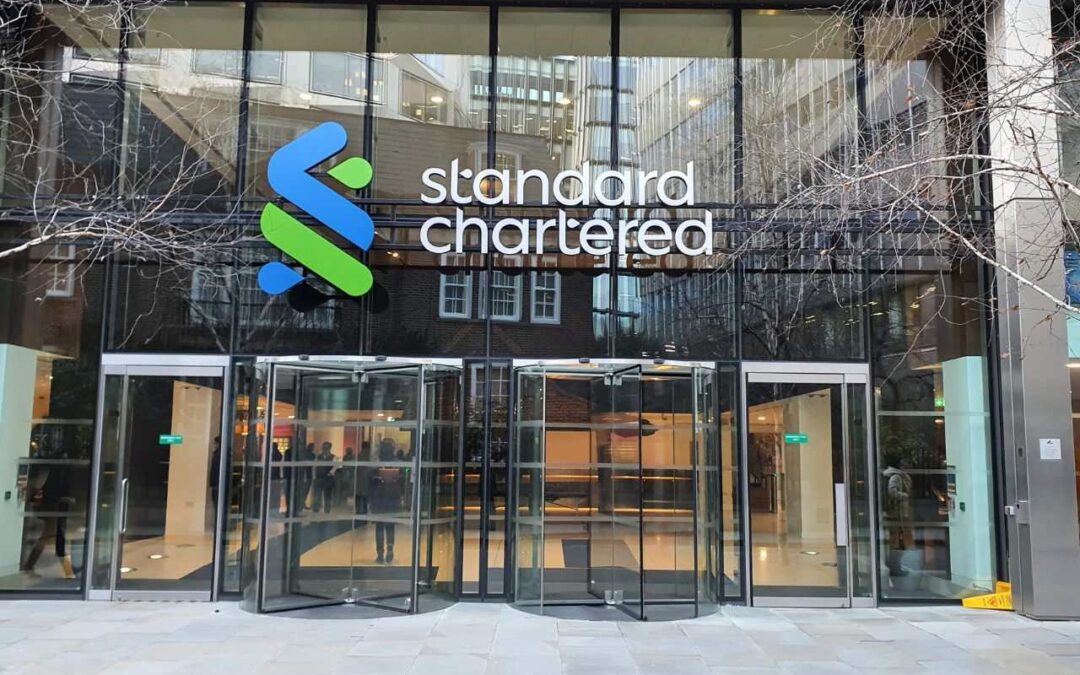Synopsis: Standard Chartered predicts tokenized real-world assets could hit $2 trillion by 2028, fueled by DeFi expansion, blockchain efficiency, stablecoin liquidity, and regulatory progress across major financial hubs.
Investment bank Standard Chartered has issued one of the boldest forecasts yet for digital finance. It expects tokenized real-world assets (RWAs) to reach a cumulative value of $2 trillion by 2028, rivaling the market size of stablecoins. That’s a leap from the current $35 billion market, translating to an astonishing 57-fold growth within just three years.
The bank’s latest report suggests that global capital is steadily moving onto blockchain rails for faster and more efficient operations. Personally, I find this shift fascinating it feels like we’re watching the early days of a financial system rewrite itself.
Standard Chartered says decentralized finance, or DeFi, will lead this transformation. By relying on transparent code and blockchain-based trust instead of banks or brokers, DeFi is beginning to challenge the very foundation of traditional finance systems.
How the $2 Trillion Could Be Divided
The report outlines a clear roadmap for this potential $2 trillion market. About $750 billion could flow into tokenized money-market funds, another $750 billion into tokenized U.S. stocks, and $250 billion each into tokenized funds and less liquid assets like commodities, corporate debt, and real estate.
This mix shows that tokenization isn’t limited to new-age cryptocurrencies it’s branching into mainstream asset classes. In my view, that’s the real story here: technology turning long-standing assets into 24/7 tradable units.
Standard Chartered points out that such diversification will bring predictable stability. It expects liquidity-heavy instruments and yield-bearing assets to anchor the early phase. Gradually, private equity and corporate debt will follow as tokenization frameworks mature and investor confidence strengthens.
Are Stablecoins the next stage for finance?
Stablecoins are another essential piece of this puzzle. Their expanding liquidity acts as a catalyst for growth in tokenized assets. The bank estimates stablecoin circulation could also reach $2 trillion by 2028, creating what it describes as a “self-reinforcing cycle” of liquidity.
Geoff Kendrick, the bank’s global head of digital assets research, emphasized that stablecoin liquidity and DeFi banking are crucial prerequisites for rapid RWA expansion. He believes exponential growth lies ahead. Many in the industry share that optimism, and frankly, it’s hard not to when stablecoins already dominate most on-chain activity.
Most of this tokenized movement will likely occur on the Ethereum network. Standard Chartered believes Ethereum’s reliability and ecosystem maturity outweigh the speed and cost advantages of other blockchains. As Kendrick puts it, efficiency is more than just transaction speed it’s about trust, adoption, and integration.
A Race Between Regulation and Innovation
The bank’s optimism comes with one key caution: regulation. Although the forecast shines bright, regulatory clarity remains a major challenge. Encouragingly, regions such as the European Union, the United Kingdom, and Singapore are creating frameworks for tokenization and stablecoin oversight.
Europe’s MiCA regulation stands out as a solid step toward consumer protection and institutional participation. In Singapore, progressive guidelines have made it a preferred destination for tokenization pilots. Having watched these trends closely, I believe these policies will determine how quickly RWAs move from headlines to portfolios.
Standard Chartered suggests that as DeFi merges with traditional finance, the global financial industry worth around $100 trillion could evolve into a token-driven ecosystem. Yet the bank warns that alignment across jurisdictions is vital to prevent misuse or market instability.
This prediction follows the bank’s earlier long-term vision of $30 trillion in tokenized assets by 2034. The 2028 estimate, however, signals a nearer-term inflection point driven by stablecoin momentum and increased on-chain adoption in 2025.
Written By Fazal Ul Vahab C H

